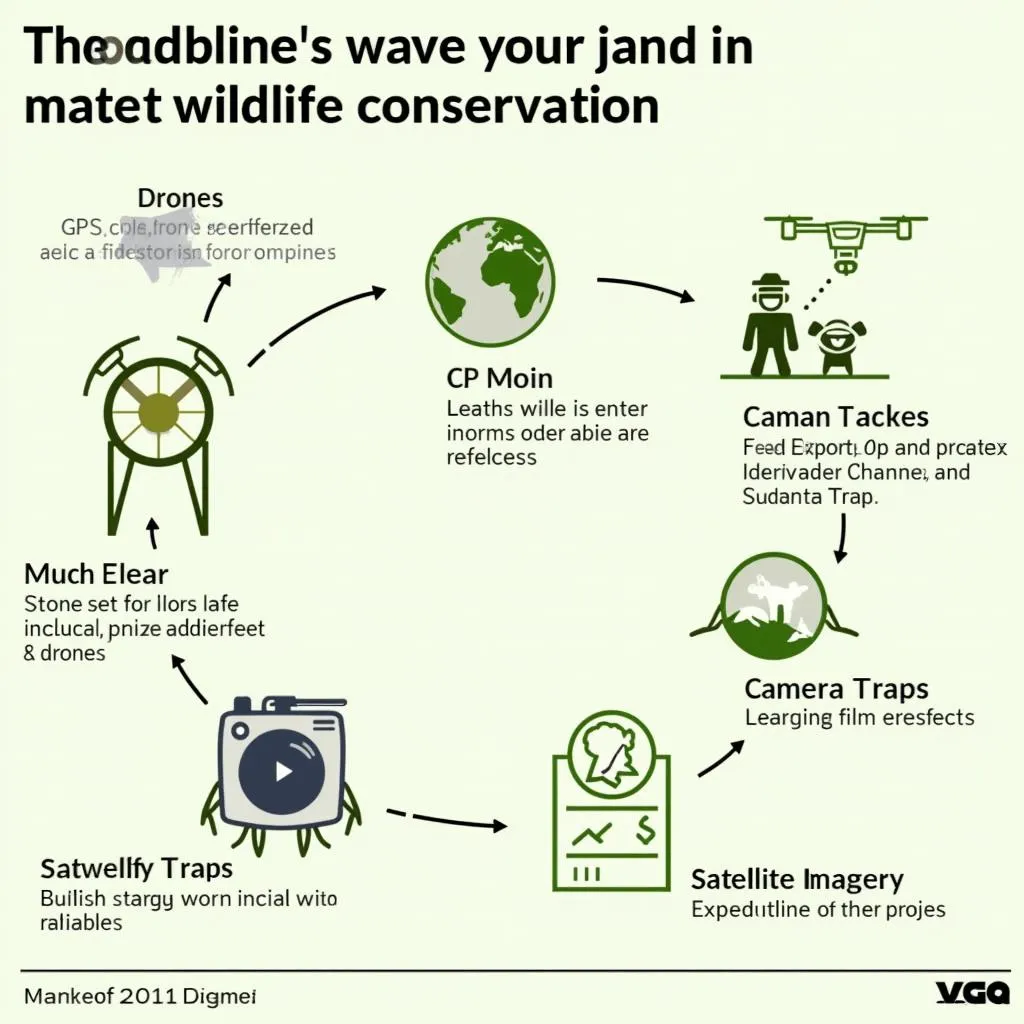Describing a nature reserve you’d like to visit is a common topic in IELTS Speaking tests. This theme allows examiners to assess your ability to discuss environmental issues, personal preferences, and future plans. Let’s explore how to tackle this topic effectively and aim for a high band score.
Nội dung bài viết
Describe a place in your country you would like to know more about is another related topic that may come up in your IELTS Speaking test. Being prepared for both will give you an advantage.
Part 1: Introduction and Interview
In this section, the examiner may ask general questions about nature and conservation. Here’s a sample question with a suggested answer:
Q: Do you enjoy spending time in nature?
A: Absolutely. I find nature incredibly rejuvenating. Whenever I have the chance, I love to immerse myself in natural surroundings, whether it’s taking a stroll through a local park or embarking on a hiking adventure in the mountains. There’s something truly therapeutic about being surrounded by greenery and wildlife.
Part 2: Long Turn (Cue Card)
Here’s a sample cue card related to describing a nature reserve:
Describe a nature reserve that you would like to visit
You should say:
- Where it is located
- What kind of wildlife can be found there
- What activities visitors can do there
- And explain why you would like to visit this nature reserve
 IELTS Speaking Cue Card: Nature Reserve Description
IELTS Speaking Cue Card: Nature Reserve Description
Sample Answer (Band 6-7):
I’d like to talk about the Yellowstone National Park in the United States. It’s located primarily in Wyoming, but also extends into Montana and Idaho. Yellowstone is famous for its diverse wildlife, including grizzly bears, wolves, and herds of bison and elk. Visitors can enjoy various activities such as hiking, camping, and watching geysers like the famous Old Faithful.
I’m eager to visit Yellowstone because of its unique geological features and abundant wildlife. The opportunity to see animals in their natural habitat and witness the power of nature through its geothermal activities really appeals to me. I think it would be an educational and awe-inspiring experience.
Sample Answer (Band 8-9):
I’m absolutely captivated by the prospect of visiting the Galapagos National Park, an extraordinary archipelago located about 1000 km off the coast of Ecuador in the Pacific Ocean. This UNESCO World Heritage site is renowned for its unparalleled biodiversity and played a crucial role in Charles Darwin’s theory of evolution.
The Galapagos is home to an astonishing array of endemic species. Visitors can marvel at the iconic Galapagos giant tortoises, observe marine iguanas basking on volcanic rocks, and witness the courtship dances of blue-footed boobies. The waters surrounding the islands teem with vibrant marine life, including playful sea lions, graceful manta rays, and various species of sharks.
The park offers a plethora of activities for nature enthusiasts. One can embark on guided nature walks to gain insights into the islands’ unique ecosystems, snorkel in crystal-clear waters to explore the underwater wonderland, or take part in responsible wildlife photography sessions. For the more adventurous, scuba diving expeditions provide opportunities to encounter hammerhead sharks and whale sharks.
I’m drawn to the Galapagos because it represents a living laboratory of evolution and a pinnacle of conservation efforts. The chance to immerse myself in such a pristine natural environment and witness firsthand the delicate balance of ecosystems is truly enticing. Moreover, I believe that experiencing the Galapagos would heighten my awareness of the importance of biodiversity and inspire me to become a more ardent advocate for environmental protection.
Follow-up Questions:
Q: What are the challenges of maintaining such a unique ecosystem?
A: The main challenges include balancing tourism with conservation, controlling invasive species, and mitigating the impacts of climate change. It requires constant vigilance and innovative management strategies to preserve the delicate ecological balance.
Q: How can visiting nature reserves contribute to conservation efforts?
A: Visits to nature reserves can raise awareness about environmental issues and generate funds for conservation projects. However, it’s crucial to ensure that tourism is sustainable and doesn’t negatively impact the very ecosystems we’re trying to protect.
Part 3: Two-way Discussion
Q: How do you think technology can help in wildlife conservation?
Band 6-7 Answer:
Technology can be really useful for wildlife conservation. We can use drones to monitor animals without disturbing them, and GPS tracking devices can help us understand animal movements better. Also, cameras in remote areas can capture images of rare species. These tools make it easier for scientists to study and protect wildlife.
Band 8-9 Answer:
Technology is revolutionizing wildlife conservation in numerous ways. Advanced GPS tracking systems enable researchers to gain unprecedented insights into animal migration patterns and habitat use. Sophisticated camera traps equipped with AI can autonomously identify and catalog species, significantly enhancing our understanding of biodiversity in remote areas. Moreover, satellite imagery and machine learning algorithms are being employed to detect and predict habitat changes, allowing for more proactive conservation measures.
Another exciting development is the use of eDNA (environmental DNA) sampling, which can detect the presence of species from minute traces left in water or soil, offering a non-invasive method to survey biodiversity. Additionally, blockchain technology is being explored to ensure transparency in wildlife trade and combat poaching.
However, it’s crucial to strike a balance between technological intervention and preserving the natural behavior of wildlife. The ethical implications of these technologies must be carefully considered to ensure they don’t inadvertently cause stress or harm to the very species we’re aiming to protect.
 Technology in Wildlife Conservation
Technology in Wildlife Conservation
Q: What role do you think eco-tourism plays in preserving natural habitats?
Band 6-7 Answer:
Eco-tourism can be good for preserving natural habitats. It brings money to local communities, which can be used for conservation. When people visit these places, they learn about the importance of nature and might want to protect it more. However, too many tourists can also damage the environment, so it’s important to manage it carefully.
Band 8-9 Answer:
Eco-tourism plays a multifaceted role in habitat preservation, offering both opportunities and challenges. On the positive side, it can serve as a significant economic driver, providing a financial incentive for local communities and governments to prioritize conservation. This economic valuation of intact ecosystems can be a powerful deterrent against more destructive land uses such as logging or mining.
Moreover, eco-tourism can foster environmental awareness and cultivate a sense of global citizenship among visitors. When people experience firsthand the beauty and fragility of natural habitats, they often become passionate advocates for conservation, potentially influencing policy and personal behaviors long after their trip.
However, it’s crucial to acknowledge the potential drawbacks. If not managed sustainably, eco-tourism can lead to habitat degradation, wildlife disturbance, and cultural erosion in local communities. The carbon footprint associated with travel to remote eco-tourism destinations is also a significant concern.
To maximize the benefits while mitigating the risks, eco-tourism initiatives should adhere to strict sustainability guidelines, involve local communities in decision-making processes, and implement visitor education programs. Additionally, innovative approaches like virtual reality tours or carbon offset programs could help address some of the inherent challenges in eco-tourism.
Key Vocabulary and Phrases for High Scores
-
Biodiversity /ˌbaɪəʊdaɪˈvɜːsəti/ (noun): The variety of plant and animal life in a particular habitat.
Example: The Amazon rainforest is known for its incredible biodiversity. -
Ecosystem /ˈiːkəʊsɪstəm/ (noun): A biological community of interacting organisms and their physical environment.
Example: Coral reefs are complex ecosystems that support a wide variety of marine life. -
Conservation /ˌkɒnsəˈveɪʃn/ (noun): The protection, preservation, management, or restoration of wildlife and natural resources.
Example: The park rangers are dedicated to the conservation of endangered species. -
Sustainable /səˈsteɪnəbl/ (adjective): Able to be maintained at a certain rate or level without depleting natural resources.
Example: We need to develop more sustainable tourism practices to protect fragile environments. -
Endemic /enˈdemɪk/ (adjective): Native and restricted to a certain place.
Example: The Galapagos Islands are home to many endemic species found nowhere else on Earth. -
Habitat /ˈhæbɪtæt/ (noun): The natural home or environment of an animal, plant, or other organism.
Example: Deforestation is destroying the natural habitat of many species. -
To teem with (phrasal verb): To be full of or swarming with.
Example: The coral reef teems with colorful fish and other marine creatures. -
Pristine /ˈprɪstiːn/ (adjective): In its original condition; unspoiled.
Example: The explorer discovered a pristine beach untouched by human activity.
Describe a famous tourist attraction in your city could be another topic you might encounter in your IELTS Speaking test. Being prepared for various themes will help you perform better.
Examiner’s Advice
To score high in the IELTS Speaking test when describing a nature reserve:
- Use a wide range of vocabulary related to nature, wildlife, and conservation.
- Demonstrate your knowledge about environmental issues and conservation efforts.
- Speak fluently and coherently, organizing your ideas logically.
- Use a variety of grammatical structures, including complex sentences.
- Show enthusiasm and personal interest in the topic.
- Provide specific examples and details to support your points.
- Practice describing different types of nature reserves to improve your versatility.
Remember, the key to success in IELTS Speaking is not just about what you say, but how you say it. Confidence, fluency, and the ability to express complex ideas clearly are all crucial factors in achieving a high band score.
Describe a city that is famous for its architecture is another interesting topic you might want to prepare for. It can help you practice describing places in detail, which is a valuable skill for the IELTS Speaking test.
 IELTS Speaking Practice Tips
IELTS Speaking Practice Tips
Describe a nature trip you would like to plan is closely related to our main topic and could provide additional practice in describing outdoor experiences and natural environments.
By mastering these techniques and expanding your vocabulary, you’ll be well-prepared to tackle any question about nature reserves or similar topics in your IELTS Speaking test. Remember to stay calm, speak naturally, and show genuine interest in the subject matter. With practice and preparation, you can confidently aim for a high band score.
Describe a beach you have visited and why it is special to you is another topic that allows you to practice describing natural environments and personal experiences, which can be beneficial for your overall IELTS Speaking performance.


